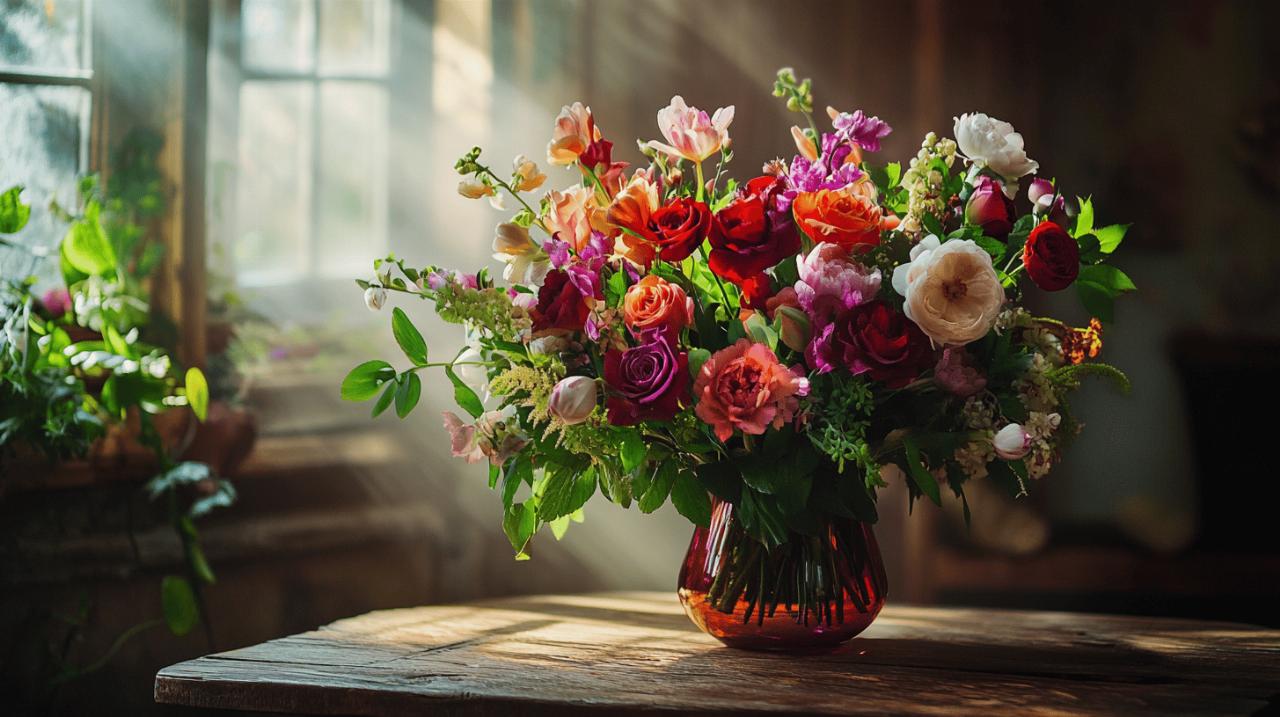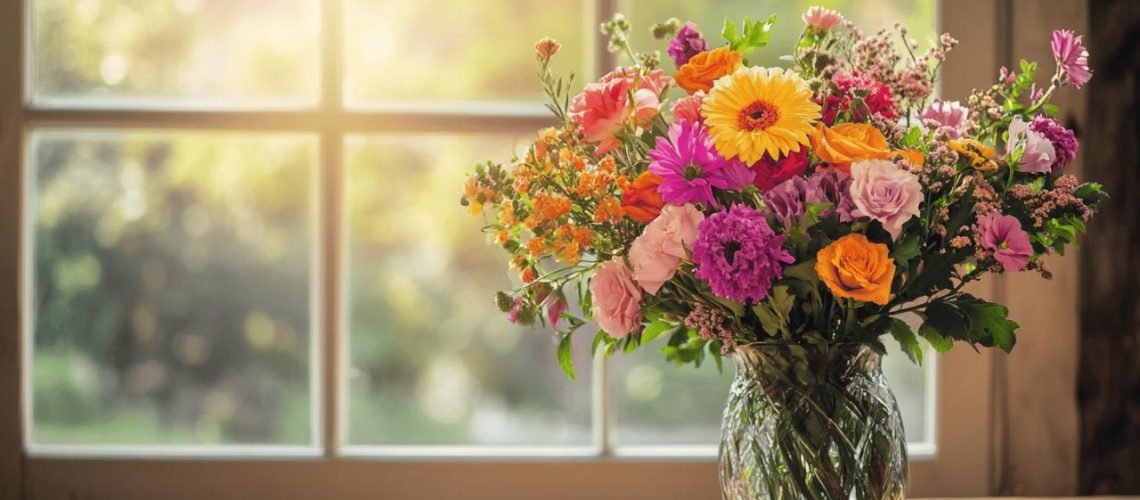Flowers bring life, color, and joy to any space, but their ephemeral nature often leaves us wishing they would last just a little longer. Whether you receive a bouquet as a gift or purchase one to brighten your home, knowing how to properly care for cut flowers can significantly extend their lifespan. This guide will provide you with effective techniques to preserve your floral arrangements throughout the year.
Proper water management for extended flower life
Water is the lifeline for cut flowers, and proper management is crucial for maximizing their freshness. One of the most important steps begins before you even place your flowers in a vase. Cutting the stems at a 45-degree angle removes about 1-2 inches and creates a larger surface area for water absorption. This simple technique allows flowers to drink more efficiently. For optimal results, consider visiting https://www.casajedo.es/ for more detailed guides on home decoration with fresh flowers that complement your interior design style.
Another essential practice is removing any foliage that would sit below the waterline in your vase. Submerged leaves decompose quickly, promoting bacterial growth that can clog stems and reduce flower longevity. This preventive measure significantly improves water quality and extends the life of your arrangement.
Creating the Perfect Water Mix for Different Flower Types
The quality of water you use matters tremendously for flower preservation. Room temperature water is generally ideal as it allows for better absorption compared to cold water. While commercial flower food packets come with most bouquets and provide a balanced mix of nutrients, several household alternatives have proven effective for flower longevity.
Interestingly, regular soda has emerged as one of the most effective household remedies for extending flower freshness. Adding approximately 1/4 cup of clear soda to your vase water provides sugar for nutrition while the slight acidity helps inhibit bacterial growth. Flowers treated with this method have shown remarkable resilience, appearing nearly as fresh on day 10 as they did on day 1.
A few drops of vodka can also be beneficial as it inhibits ethylene production, which is a natural gas that accelerates flower aging. While not as effective as the soda method, it ranks as the third most successful household technique for floral preservation.
Water changing schedules to prevent bacterial growth
Maintaining clean water is perhaps the most underrated aspect of flower care. Even with proper initial preparation, bacteria will eventually develop in the vase, blocking the stems’ water uptake channels. Establishing a regular schedule for water changes is essential for maximum flower lifespan.
Changing the water every 2-3 days dramatically reduces bacterial buildup. Each water change provides an opportunity to re-trim the stems, removing any browning or clogged portions that might restrict water flow. This regular maintenance routine ensures your flowers maintain optimal hydration throughout their display period.
When refreshing the water, take a moment to clean the vase thoroughly to remove any bacterial film that may have formed on the interior surfaces. This comprehensive approach to water hygiene creates an environment where cut flowers can thrive for extended periods.
Environmental control strategies
Beyond water management, the environment surrounding your floral arrangement plays a crucial role in determining its lifespan. Several external factors can either accelerate or delay the natural aging process of cut flowers.
One often overlooked factor is the proximity of flowers to ripening fruits. Many fruits release ethylene gas as they ripen, which acts as a signal to accelerate the aging and opening of flowers. Keeping your arrangements away from fruit bowls can significantly extend their display life.
Similarly, protecting flowers from direct drafts, whether hot or cold, prevents rapid moisture loss through the delicate petals and leaves. Positioning arrangements away from heating vents, air conditioners, and open windows creates a stable environment that promotes longevity.
Temperature considerations for maximum freshness
Temperature control represents one of the most powerful techniques for flower preservation. Cooler temperatures slow the metabolic processes that lead to aging, effectively putting flowers into a state of suspended animation during their rest periods.
Research has shown that refrigeration is the single most effective method for extending flower life. Placing arrangements in a refrigerator for approximately 8 hours each night (typically while you sleep) dramatically slows deterioration. Flowers treated with this cooling technique have remained healthy and vibrant even after 10 days, outperforming all other preservation methods.
During the day, maintaining a moderate room temperature away from heat sources like radiators, sunny windowsills, or electronic devices provides the ideal environment for displaying your flowers. This temperature management strategy mimics the natural day-night cycle that flowers evolved with, helping to maintain their freshness.
Light and Air Flow Management for Flower Preservation
While flowers need some light to maintain their color and form, direct sunlight accelerates water evaporation and causes flowers to open too quickly, leading to premature wilting. Placing arrangements in bright, indirect light provides the perfect balance for extended display life.
Gentle air circulation helps prevent the development of mold and fungus that thrive in stagnant conditions. However, strong air currents can dehydrate delicate blooms rapidly. Finding the sweet spot with moderate air movement contributes significantly to flower longevity.
Contrary to popular belief, treatments like hairspray should be avoided entirely. Testing has shown this to be among the worst methods for flower preservation, actually accelerating deterioration rather than preventing it. Similarly, adding copper pennies to vase water may cause flowers to open too quickly, leading to wilting by approximately day 7.
By implementing these water management and environmental control strategies, you can transform the typically brief enjoyment of cut flowers into a lasting display that brightens your home throughout all seasons. These techniques require minimal effort but yield remarkable results in extending the beauty and vibrancy of your floral arrangements.

